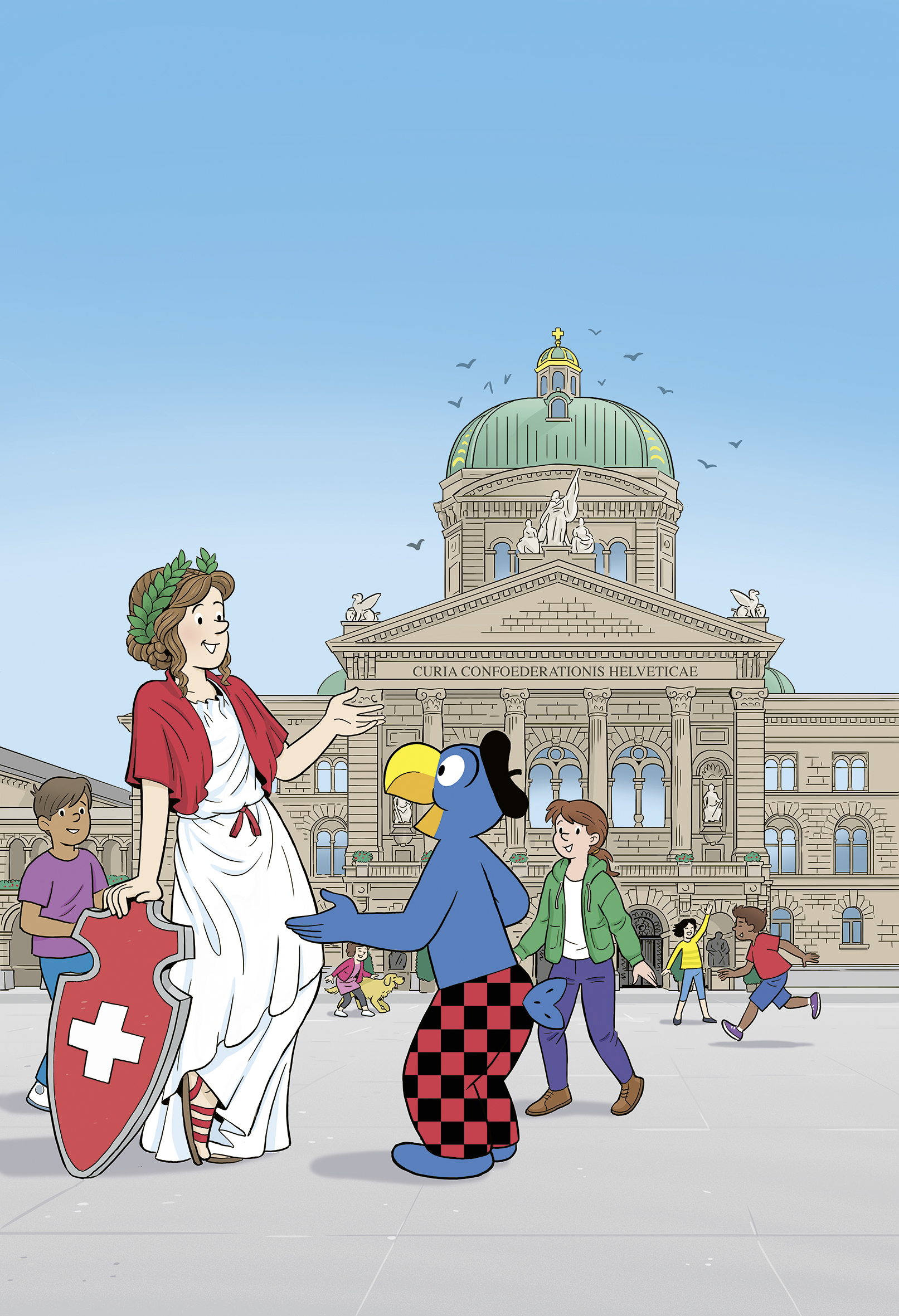Programme
15 May is the International Day of Families. To mark the occasion the Parliamentary Services are putting on a special programme for children on Saturday, 18 May.
Globi in Parliament
A very special guest will be coming to see us between 10.00 am and 4.00 pm: Globi! Where might he be hiding? Come along and have your picture taken with him as a memento.
Family tours
During the day we will be offering guided tours for families where our guides will speak about the Parliament Building and how politics works in a child-oriented manner. The tour lasts around 45 minutes.
Max. 30 people per tour, register on the day.
Tour times and language
- 10.00 am German
- 11.00 am French
- 1.00 pm German
- 2.00 pm Italian
- 3.00 pm German
Book sale «Globi and Democracy»
Copies of Globi’s latest adventure, «Globi and Democracy, will be on sale in the domed hall. You can pick up a colouring book at the stand, so why not stop by!

© 2018 Globi Verlag, Zürich
Refreshments in Café Vallotton
The former reading room will be open for refreshments. Come and enjoy the stylish surroundings. Children are entitled to a free glass of squash at the bar.
Other activities
Independent tour of the building
Visitors will be free to look around the two Council chambers, the domed hall and the lobby. Our team of guides will be on hand to tell you about the workings of parliament and the building’s history.
Exhibition on 100 years of proportional representation
On 13 October 1918 the Swiss people voted to introduce proportional representation for National Council elections. The impact on the party-political make-up of parliament following the subsequent early elections a year later was huge. The exhibition examines the background, looking at momentous events such as the end of the First World War and the National Strike, and gives an insight into living conditions at the time. Visitors are free to look around the exhibition on their own.